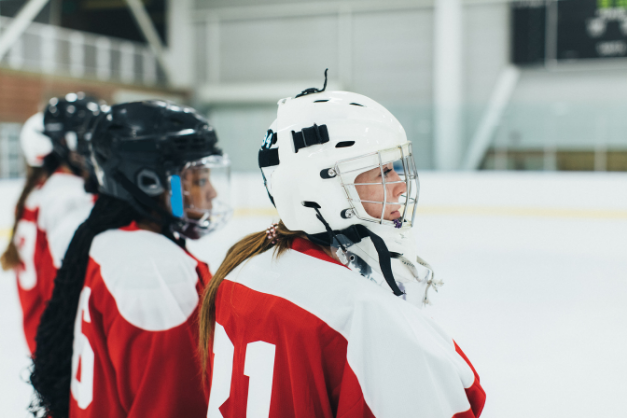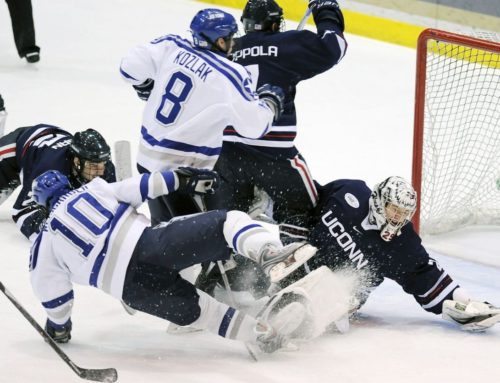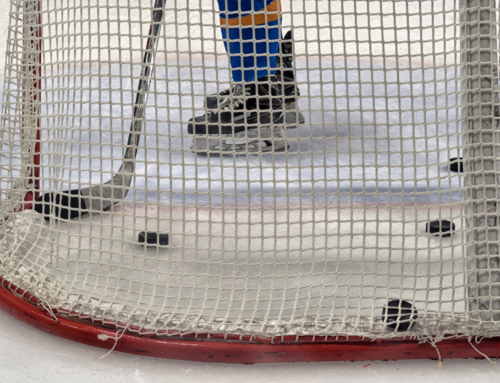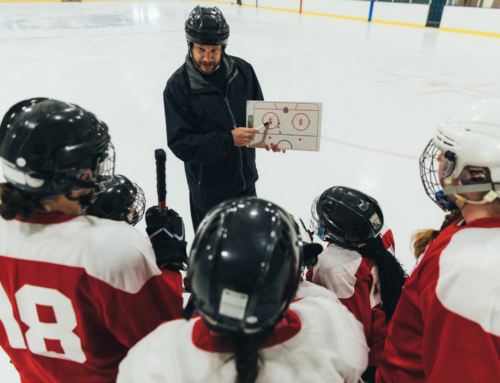On-ice performance is only half the battle
While women’s college hockey is growing, the competition for scholarships is still tough. And if you want to be recruited to play in college, there are several things you need to know:
1. The Puck Is On Your Stick
Most women’s college hockey coaches don’t have big recruiting budgets so, unless you’re an elite talent with recruiters clamoring at your door, it will be up to you to get on a coach’s radar. To do that, figure out several colleges that you might be interested in attending and reach out to the coach or recruiting coordinator at each of those schools. Start by filling out each school’s athletic department’s recruit questionnaire (if one is available). Then, pick up the phone and call them. Be ready to explain, either directly to the coach or in a voicemail, a little bit about yourself, your position and experience, and why you think you’d be a good fit with that program and that school.
Follow up your calls with personalized, introductory emails to each coach or recruiter that reinforces your ability, experience, and interest in that school. Make sure those emails include links to your recruiting profile, your highlight video, your coach’s contact information, your upcoming game schedule, and an invitation for the coach to see you play in person. You can also ask your coach to send recommendation letters to each of the coaches on your list. Finally, be sure to utilize social media such as Twitter or YouTube to bolster your online profile and to post updates on your progress and accomplishments.
2. Shoot For The Top Shelf
The higher level of hockey you play, the better your chances of being recruited. If you’re not playing high school hockey in Minnesota, elite AAA travel teams or hockey prep schools offer you the best opportunities for exposure to college coaches. Note that playing for AAA travel teams or hockey prep schools will likely require you to leave home at age 15 or 16, and it can also be expensive. However, if your goal is a college hockey scholarship, the coaching, experience, connections, and competition level you face can greatly accelerate your development.
Beyond that, honestly assess your own skills and abilities and look for programs where you can fit in and contribute. If you’re not sure, ask your coaches for guidance on what school might offer you the best opportunity to play and study.
3. Don’t Get Caught Shorthanded
Women’s College hockey is an equivalency sport. Therefore women’s teams have more players than scholarships. As most coaches try to award partial scholarships to as many players as possible, full-scholarships are rare for all but the most elite players. That means, even if you do land a partial scholarship to play hockey in college, you’ll still need to pay for the remainder of your college costs. Know the costs of each school you’re interested in, keep your grades up to maximize your chances of adding an academic scholarship, and be aware of other available merit-based scholarships and aid packages.
4. See The Whole Ice
There are only 36 Division I programs. So, if you’re not getting any interest from those coaches, consider schools at the Division III level. With 86 women’s hockey teams, DIII schools offer far more opportunities to be recruited to play in college. The catch is, Division III schools don’t offer athletic scholarships. However, most do offer ample academic scholarships so, as noted above, keep your grades up and know the tuition, fees, and cost-of-living of each school you’re interested in to help find the best fit for you and your family.
5. Get In Scoring Position
College hockey coaches don’t have huge recruiting budgets, so make yourself easy to be recruited. In addition to having an online profile, highlight video, and social media presence, attend a coach’s skills camp, combines, recruiting camps, and showcases.
Further, remember that good grades in high school demonstrate to coaches that you can handle the load in college, in the classroom, and on the ice. With better grades, you’ll be eligible for more academic scholarship money. And that will make you a more attractive recruit to a coach who’s trying to stretch his or her recruiting budget.
Finally, make sure your online profile gives a coach all the information he or she needs and that your highlight video shows (in a 3-4 minute package) that you have the skill and potential to contribute to the team and compete at the college level. Don’t leave anything to chance, so that when you take your best shot, you score with your goal of a college scholarship.
Did you enjoy the article ‘The 5 Things You Need To Do To Get Recruited In Women’s College Hockey’? If so, check out The 5 Most Important Things To Know About Recruiting or more of our articles HERE.





